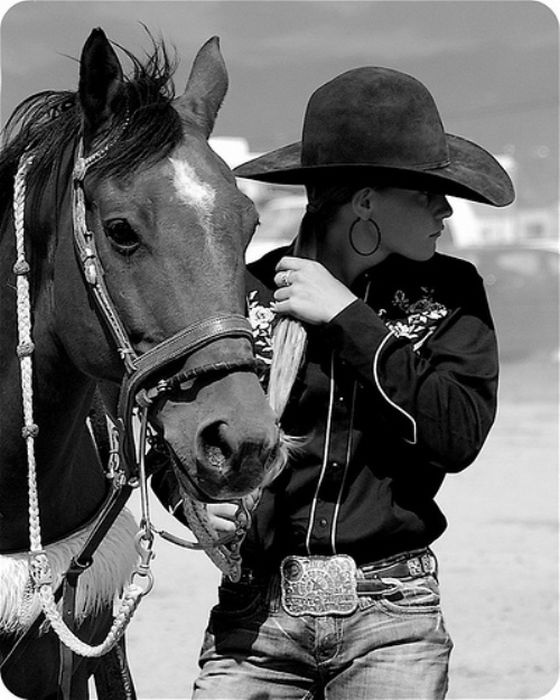|
|
Girl With A Horse
|
The horse adapted to survive in areas of wide-open terrain with sparse vegetation, surviving in an ecosystem where other large grazing animals, especially ruminants, could not. Horses and other equids are odd-toed ungulates of the order Perissodactyla, a group of mammals that was dominant during the Tertiary period. In the past, this order contained 14 families, but only three—Equidae (the horse and related species), the tapir, and the rhinoceros—have survived to the present day. The earliest known member of the Equidae family was the Hyracotherium, which lived between 45 and 55 million years ago, during the Eocene period. It had 4 toes on each front foot, and 3 toes on each back foot. The extra toe on the front feet soon disappeared with the Mesohippus, which lived 32 to 37 million years ago. Over time, the extra side toes shrank in size until they vanished. All that remains of them in modern horses is a set of small vestigial bones on the leg below the knee, known informally as splint bones. Their legs also lengthened as their toes disappeared until they were a hooved animal capable of running at great speed. By about 5 million years ago, the modern Equus had evolved. Equid teeth also evolved from browsing on soft, tropical plants to adapt to browsing of drier plant material, then to grazing of tougher plains grasses. Thus proto-horses changed from leaf-eating forest-dwellers to grass-eating inhabitants of semi-arid regions worldwide, including the steppes of Eurasia and the Great Plains of North America.
By about 15,000 years ago, Equus ferus was a widespread holarctic species. Horse bones from this time period, the late Pleistocene, are found in Europe, Eurasia, Beringia, and North America. Yet between 10,000 and 7,600 years ago, the horse became extinct in North America and rare elsewhere. The reasons for this extinction are not fully known, but one theory notes that extinction in North America paralleled human arrival. Another theory points to climate change, noting that approximately 12,500 years ago, the grasses characteristic of a steppe ecosystem gave way to shrub tundra, which was covered with unpalatable plants.
• Wild species surviving into modern times
A truly wild horse is a species or subspecies with no ancestors that were ever domesticated. Therefore, most "wild" horses today are actually feral horses, animals that escaped or were turned loose from domestic herds and the descendants of those animals. Only two never-domesticated subspecies, the Tarpan and the Przewalski's Horse, survived into recorded history.
|
|









